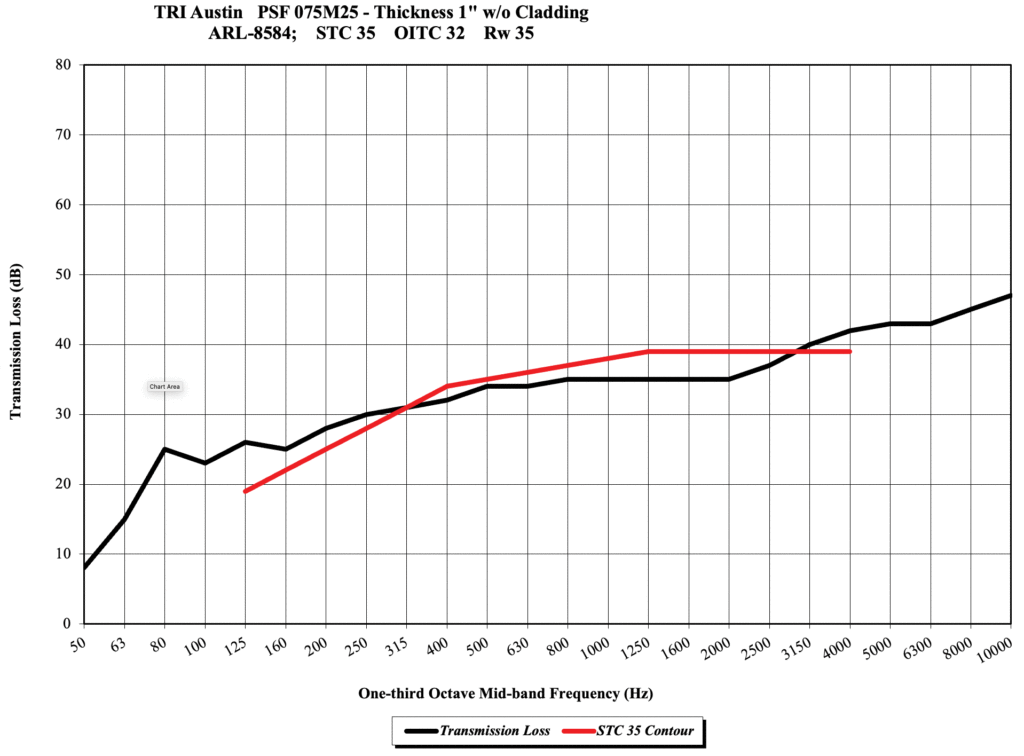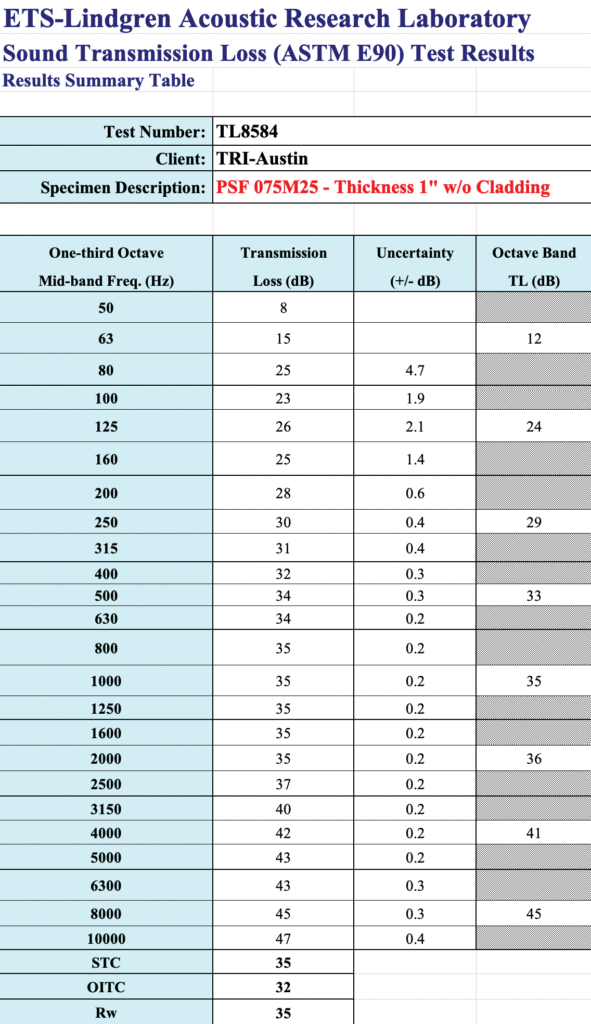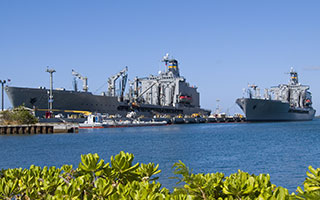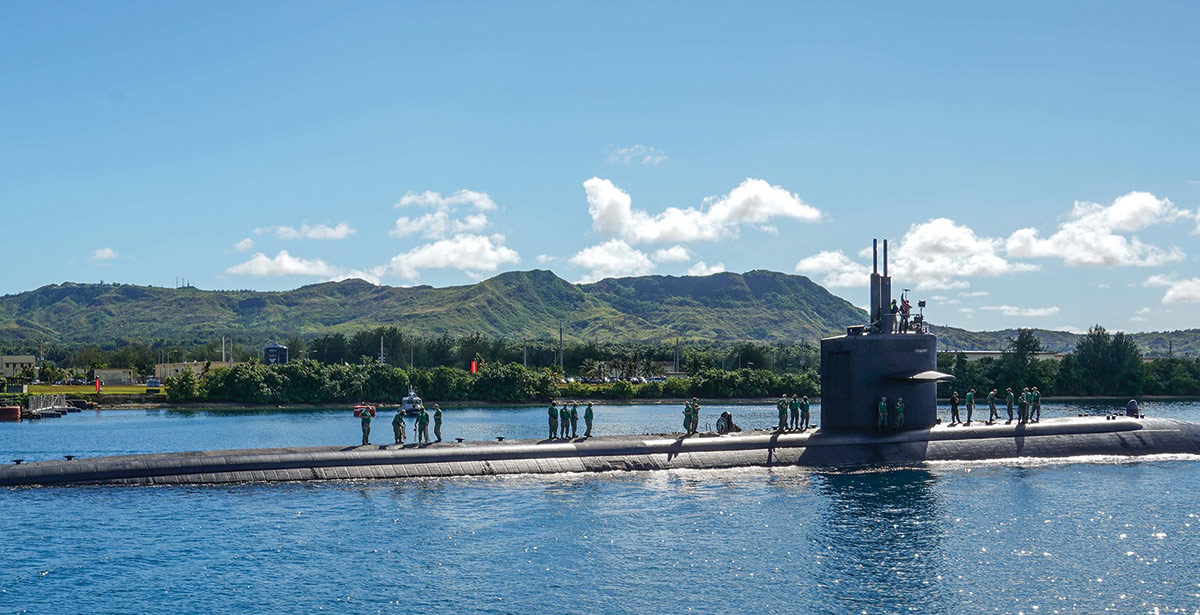
Navy sailors must remain at peak performance when tasked with missions involving ever-increasing difficulty. Restful sleep is essential for success, yet noise generated within the close working quarters of ships and submarines can be detrimental to sleep cycles. Therefore, the use of innovative materials is desired to bolster natural sleep for more restorative rest. Noise control treatments can minimize mechanical and other noises onboard Navy platforms.
Texas Research Institute Austin, Inc. (TRI Austin), developed a noise control material (Figure 1) called ThermaSilence that possesses the required physical and environmental properties for internal shipboard applications. It meets the stringent fire, smoke, and toxicity (FST) requirements of MIL-STD-2031, entitled “Fire and Toxicity Test Methods and Qualification Procedure for Composite Materials Used In Hull, Machinery, and Structural Applications Inside Naval Submarines”, as shown in Table 1 below.
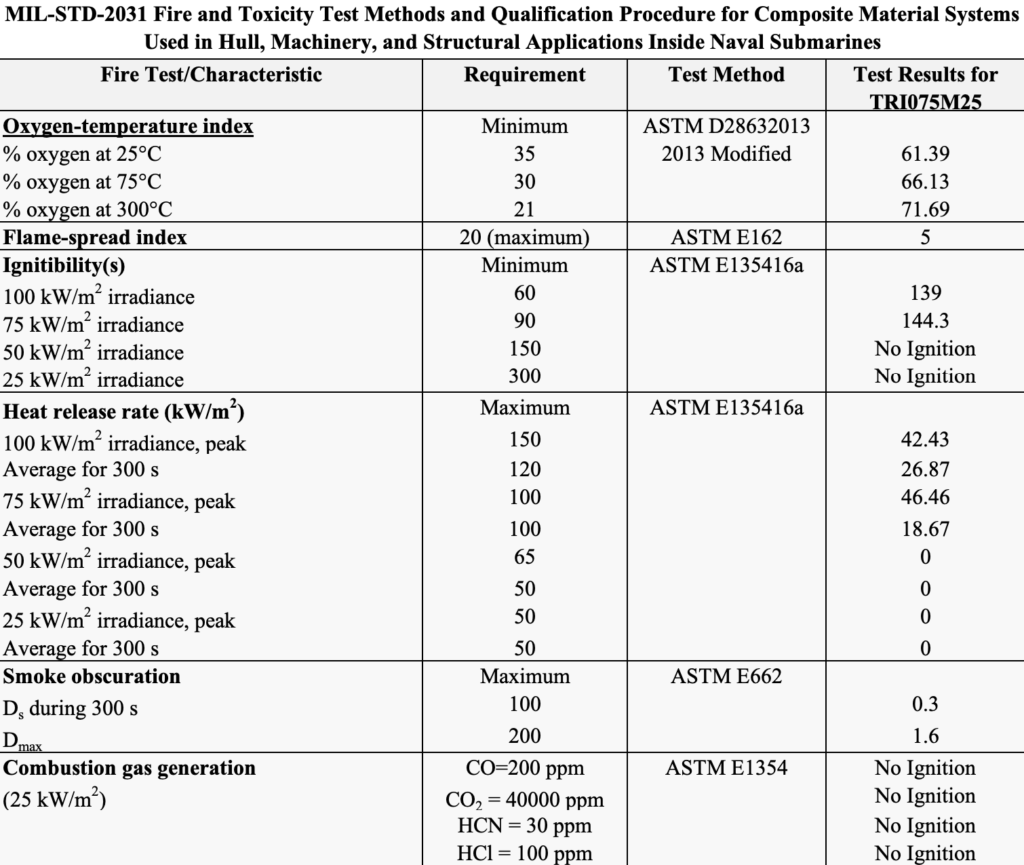
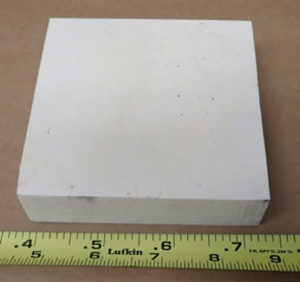
ThermaSilence was tested for Sound Transmission Loss at ETS-Lindgren Acoustic Research Laboratory in Cedar Park, TX (a NVLAP-accredited laboratory, Scope of Accreditation under Lab Code 100286-0). At one inch thickness, the material achieved an excellent Sound Transmission Class (STC) of 35 (per ASTM E413) and Outdoor/Indoor Transmission Class (OITC) 32 (per ASTM E1332) in Sound Transmission Loss testing (per ASTM E90). Figures 2 and Figure 3 on the following page show the test results of the bare material.
ETS-Lindgren Acoustic Research Laboratory
Sound Transmission Loss (ASTM E90)
Test Results – Results Summary Table
ThermaSilence is easy to use and cost effective for sound isolation where FST resistance is required. This new material can be clad/co-cured in metal or composite skins. Low temperature cure (200 °F) enables ThermaSilence to be fabricated in place on a submarines and surface ships. Its low density
of 0.03 lb/in3 (0.83 g/cm3) lends itself to weight-sensitive applications.
We are evaluating various commercial applications for ThermaSilence, wherein its stringent FST properties and effective sound isolation can be used to reduce sound where critical and mitigate fire risk. Applications include various commercial markets such as cruise ships, yachts, trains, and offshore
oil rig habitability spaces.
